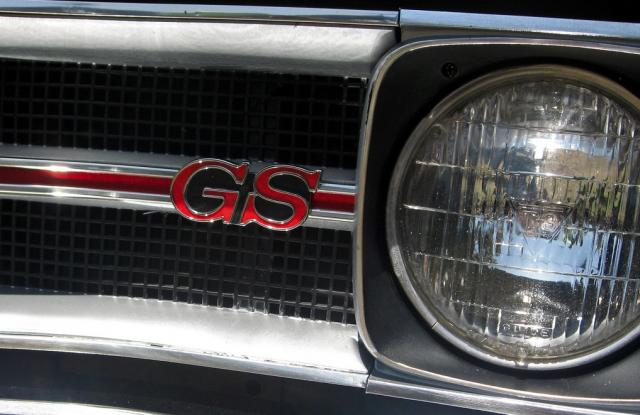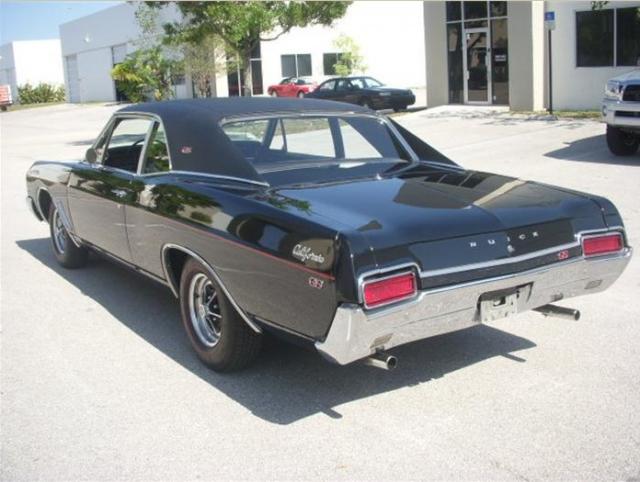During the muscle car era, it wasn’t unusual for manufacturers to create a unique promotion to kick-start sales. Dodge’s White Hat Special in the spring of 1969 is a notable example of bundling options into a value-based package. Sometimes these promotions were purely regional and created a unique model, such as the Mustang California Special.
In fact, “California” editions were pretty commonplace, as the 1960s were oddly focused on the West Coast thanks in part to a burgeoning film and music industry, the loose, liberal anti-establishment culture and carefree surf culture, making it immediately appealing to the massive baby boom generation of young adults.
 Tapping into this was Buick, who had its own regional promotion in 1967 that, in an interesting twist, ended up going national the following year. That car would be the California GS.
Tapping into this was Buick, who had its own regional promotion in 1967 that, in an interesting twist, ended up going national the following year. That car would be the California GS.
To understand the whats and whys of the California GS, we need to look back to 1965 when the Gran Sport package debuted for the Skylark. Then, the only motor was Buick’s 325-horsepower 401cid “Nailhead” Wildcat 445 (the nickname came from its small valves, and the number referred to its torque rating). It was a respectable performer, but it had nothing on Pontiac’s GTO or even the new 400 from the Oldsmobile 4-4-2.
Buick was in a difficult place – particularly in regard to luring in young potential customers. Pontiac has earned its youthful performance-oriented persona thanks to its active role in racing and by no small contribution, the new GTO. Chevrolet naturally fell in with the young car buyers thanks to it’s entry-level price point, but Buick was considered stodgy, pricey and dusty, making Buick’s sedate Wildcat a bit of a tough sale when compared to Chevelle Super Sports and Goats.
Two years later in 1967, the market was much more competitive, particularly as all brands seemed to be introducing low-frills, performance-tuned entry-level-priced coupes. Buick had to up the ante to remain competitive, so the Gran Sport was rechristened GS 400 to reflect its new 400 cubic inch, 340-horsepower motor.
The 400 cubic inch big block pushed GM’s “No Plus-400-Cubic-Inch” cap to the very limit, a move which was echoed by Oldsmobile and Pontiac. While big numbers – both in cubes and horsepower – was sexy and made for good ad copy, the General knew that most sales were found in lesser-equipped machines. This fact birthed a lower-tiered performance package to the GS 400, a sister model dubbed the GS 340.
Motivation for the latter came from a 340cid V8, a motor Buick introduced in 1966 that had its origins in the aluminum 215cid V8 from 1961. Output was 260 horsepower and 365 lb.-ft. of torque. Styling was identical to the GS 400, including the twin mock hood scoops, but the GS 340 was only available as a two-door hardtop in either Arctic White or Platinum Mist.
 Exclusive to the GS 340 were hood scoops painted red, matching the broad rally side stripe running from the back of the car to the fake fender vents behind the front wheels.
Exclusive to the GS 340 were hood scoops painted red, matching the broad rally side stripe running from the back of the car to the fake fender vents behind the front wheels.
This was perhaps the first of what would later be called “Junior Supercars” that achieved some popularity a few years later. Buick touted it as the one “…for people who look for a large measure of sporting flavor at a low price.”
The GS 340, though not wildly popular, did manage to tap into a core thread in automobile purchasing during this period, namely maximizing the sporty appearance while including performance upgrades with substantially less creature comforts. Sibling GM brands like Pontiac and Chevrolet had seen boosted youth appeal with these vehicles and was only natural for Buick and even Oldsmobile to catch on.
So where does the California GS fit in? Sometime in the middle of the 1967 model year, California-area Buick dealers began offering a sporty pillared coupe that they touted as “The IN car for Golden Staters on the GO – High performance and Buick quality at “economy car” price.” List price for the California GS was $3273.68 as delivered in Southern California.
Standard equipment for the then-limited edition Buick included the “peppy” 340cid High-Performance V8 from the GS 340 with the standard GS hood and faux scoops, the Super Turbine two-speed automatic transmission, a black vinyl top, Buick’s “Ride and Handling Performance Package,” a tinted windshield, cchrome wheels, Buick’s Air Injection Reactor, Deluxe steering wheel, carpeting, front and rear, and unique custom California GS ornamentation.
Using the “post” or B-pillared coupe too, was a common option for entry-level muscle, as the pillared-coupes were more prevalent, particularly as entry-level and fleet vehicles, making the sleeker hardtop coupes all the more rare; and secondly were preferred by dyed-in-the-wool performance enthusiasts as the post coupes provided additional rigidity while under hard acceleration.
 It is likely the 1967 California GS continues to be surrounded by an enigma because it was a regional promotion to push sales of Buick’s mid-size offerings.
It is likely the 1967 California GS continues to be surrounded by an enigma because it was a regional promotion to push sales of Buick’s mid-size offerings.
However, identifying one has also contributed to its obscurity because the VIN shows it to be a Special V6 pillared coupe (the Special being Buick’s base A-body, slotted below the Skylark). Adding to the confusion is the body tag that shows it to be a Special V8 pillared coupe.
Accurate production numbers are hard to come by – 544 and 1577 are quoted from different sources, with the latter being the most likely number according to the Buick documents found at the Sloan Museum.
But that wasn’t the end of the California GS. The performance package went nationwide for 1968 as other brands increased their entry-level appeal with marques like the Plymouth Road Runner and Dodge Super Bee.
As in 1967, the California GS was based on the Special coupe with the B-pillar, but Buick redesigned its A-body so it was all-new. The new platform was completely restyled and provided Buick designers to craft specific changes for the GS to distinguish it from other Skylarks.
Buick advertisements asked, “Why settle for less when the California GS Buick, built especially for YOU, costs no more?” That was answered by 4,831 buyers in 1968, with another 3,574 for 1969 until Buick put this unique amalgamation of Special and GS models to rest. Sometimes overshadowed by the mightier Stage I 455-powered Buicks that followed, the California GS was Buick’s only foray into the minimalist muscle car movement which is what most enthusiasts remember today.
CHECK OUT OTHER MUSCLE CARS YOU SHOULD KNOW
- Dick Landy’s ’70 HEMI Dodge Challenger R/T
- ’70 AMC AMX/3 Supercar Concept
- ’71 AMC Matador Machine 401
- ’67 Plymouth HEMI GTX “Silver Bullet”
- ’71 Baldwin Motion Phase III GT
- ’63 Chevrolet Z11 Impala 427
- ’64 Chrysler Ghia Turbine Car
- ’63 Pontiac Catalina Lightweight 421
- ’69 Mercury Cougar BOSS 429
- ’69 Royal Bobcat Pontiac GTO Ram Air V
- ’87 Buick Regal GNX
- ’69 Ford Mustang BOSS 302 George Follmer’s #16
- ’69 Ford Mustang BOSS 429
- ’69 Dodge Charger Daytona #88
- ’69 Motion Chevrolet Camaro Z/28 427 ZLX
- ’69 Motion Hurst/Oldsmobile 455




















